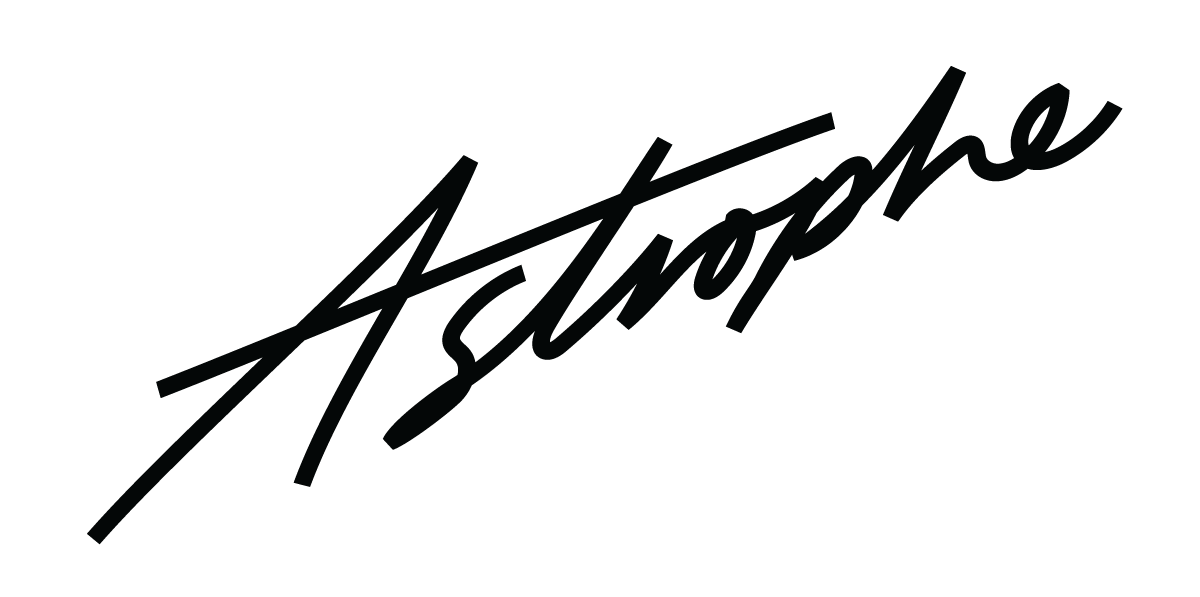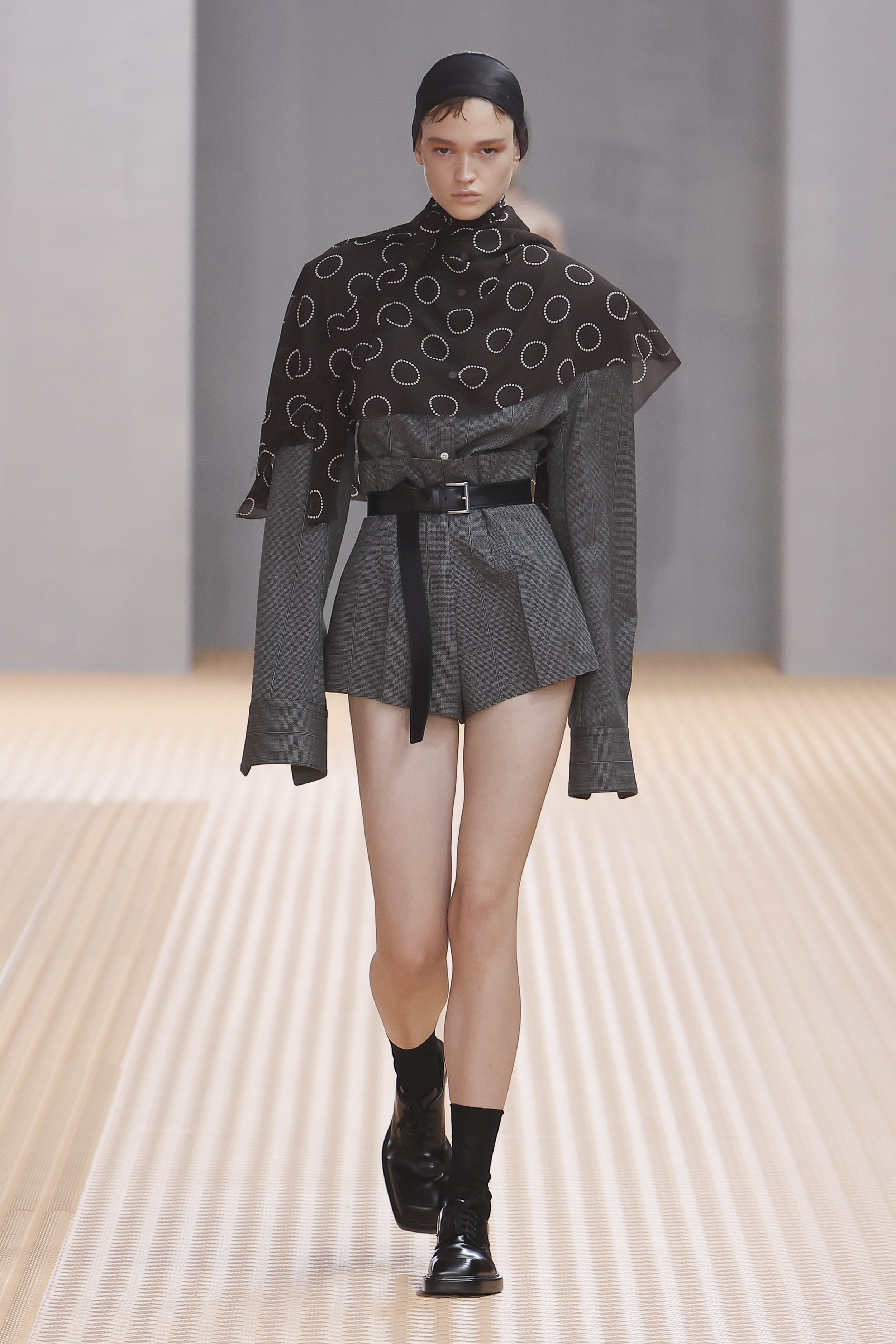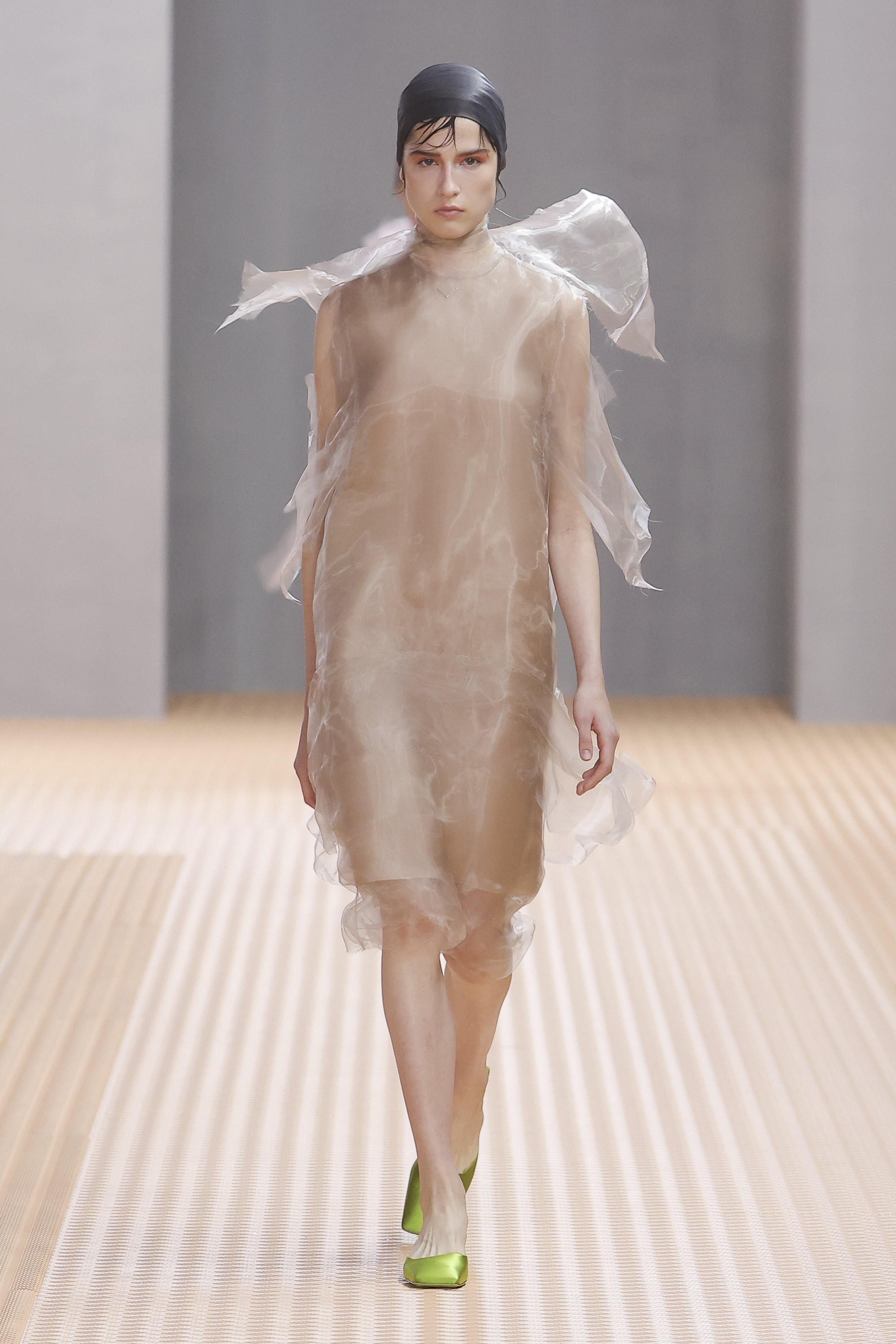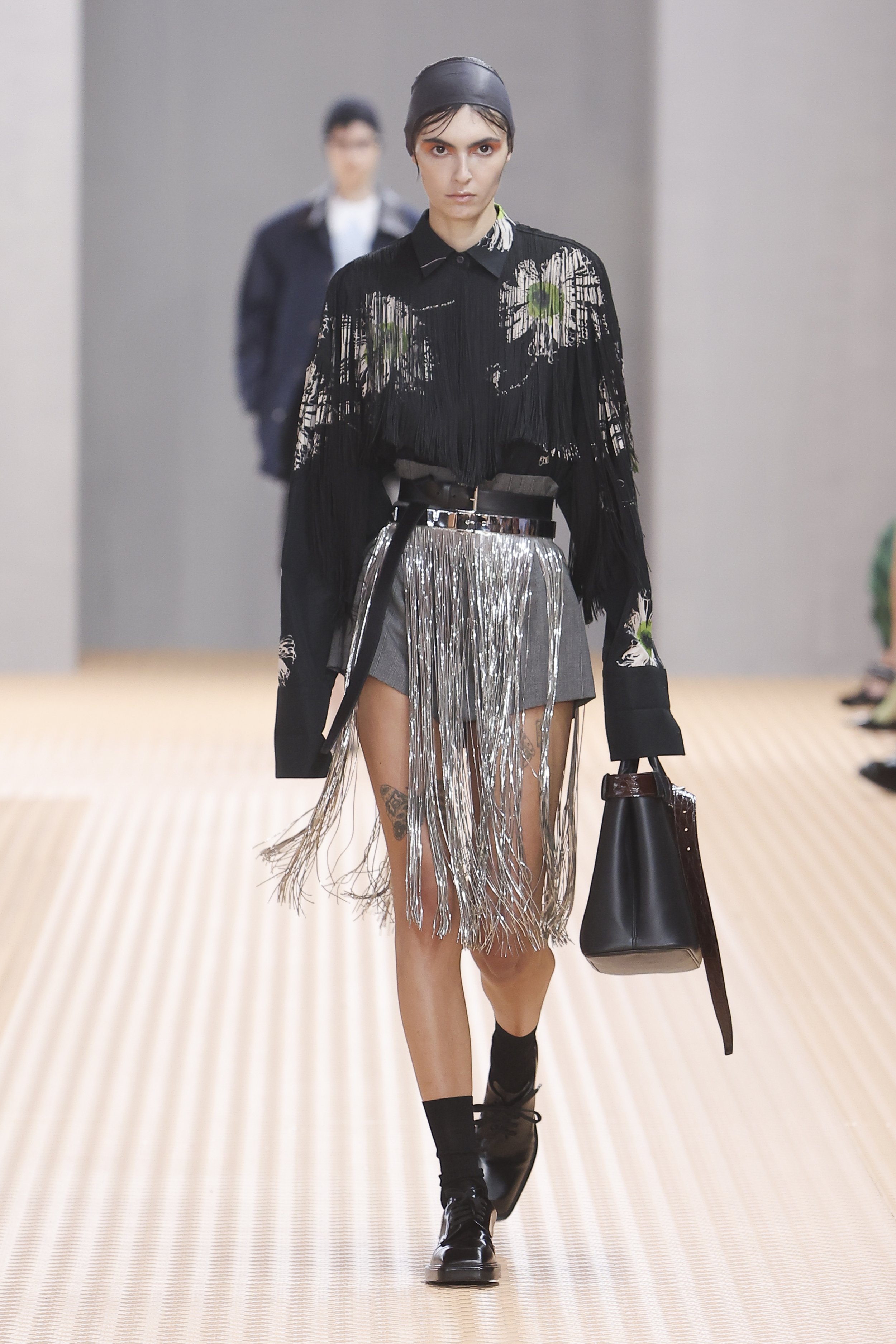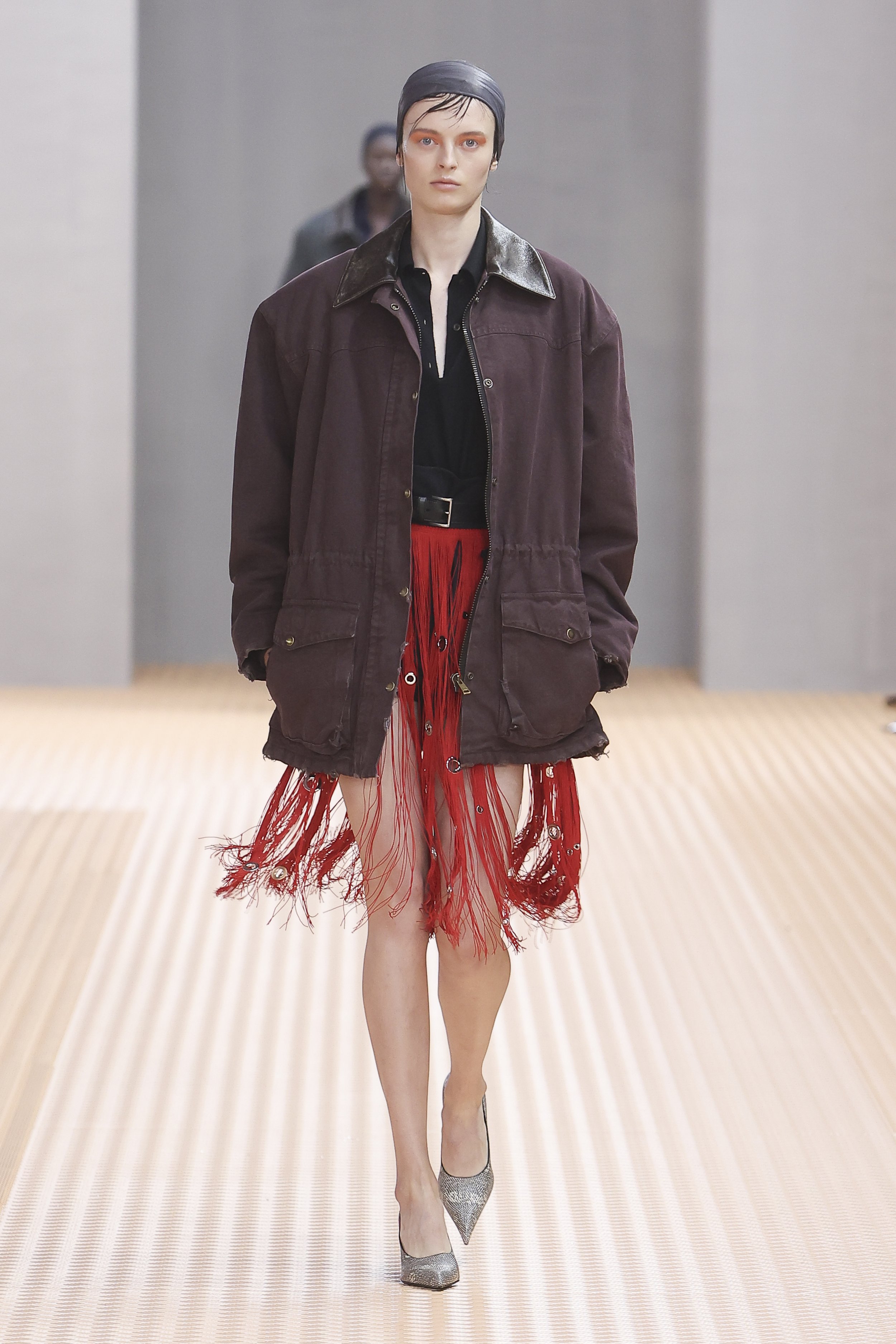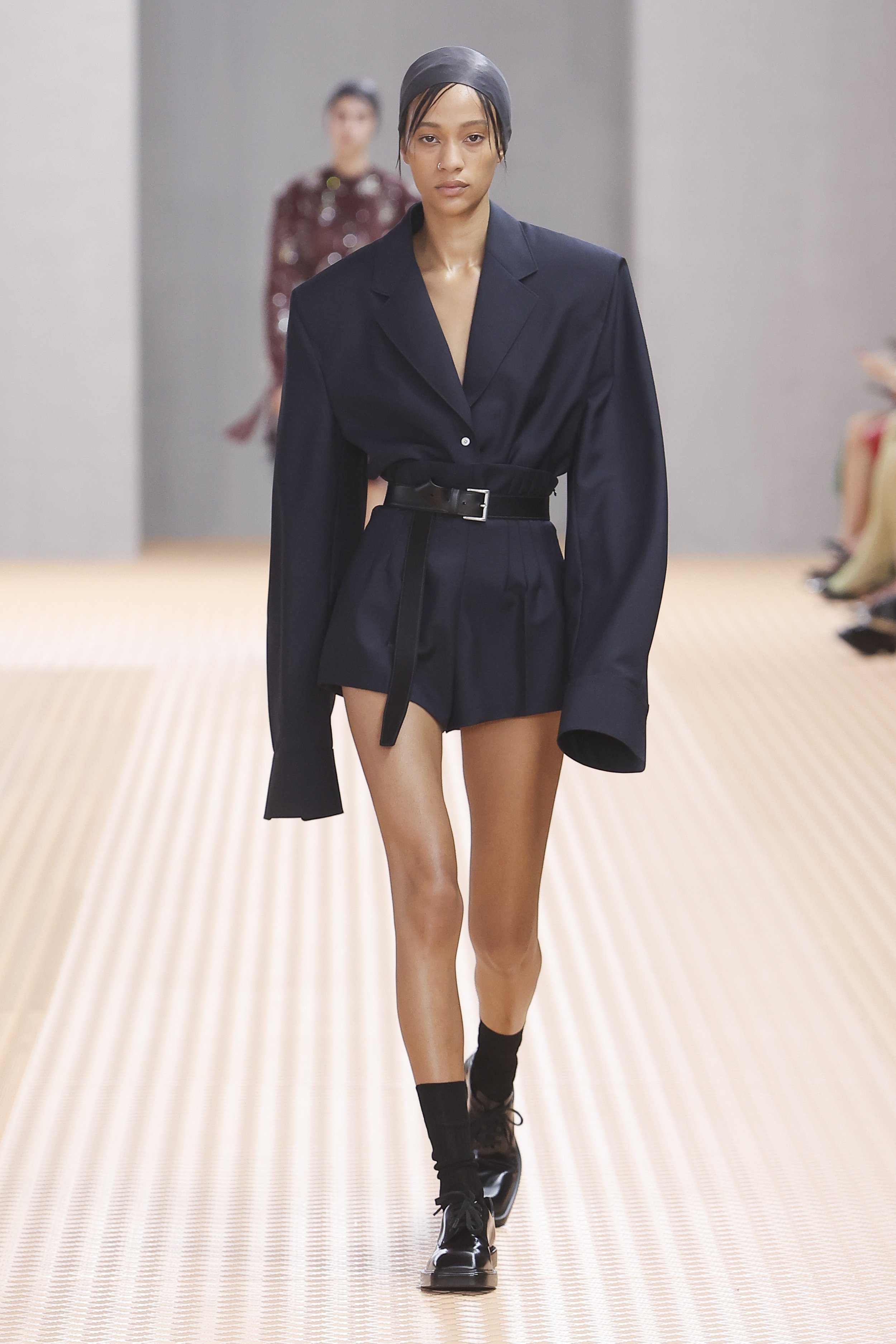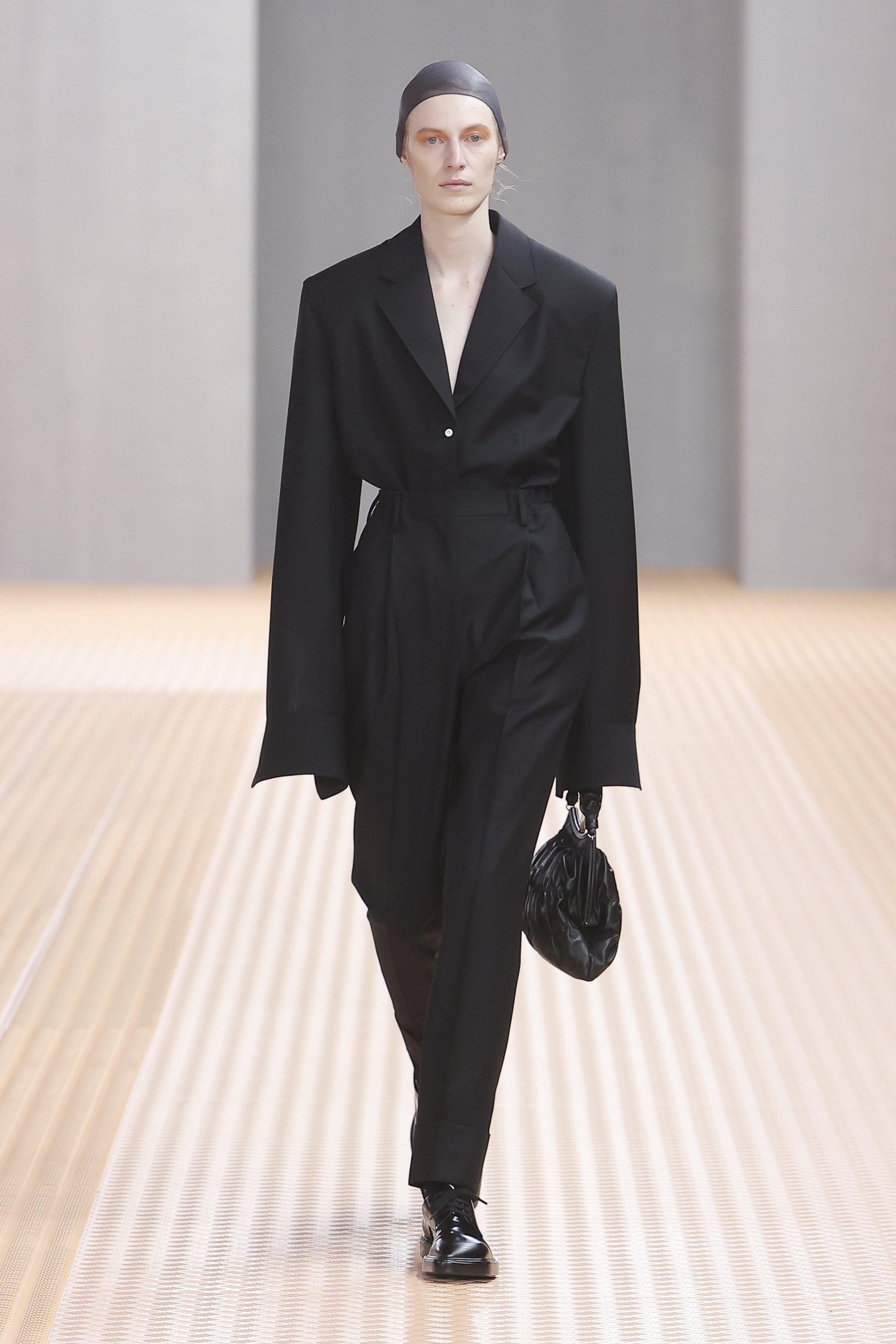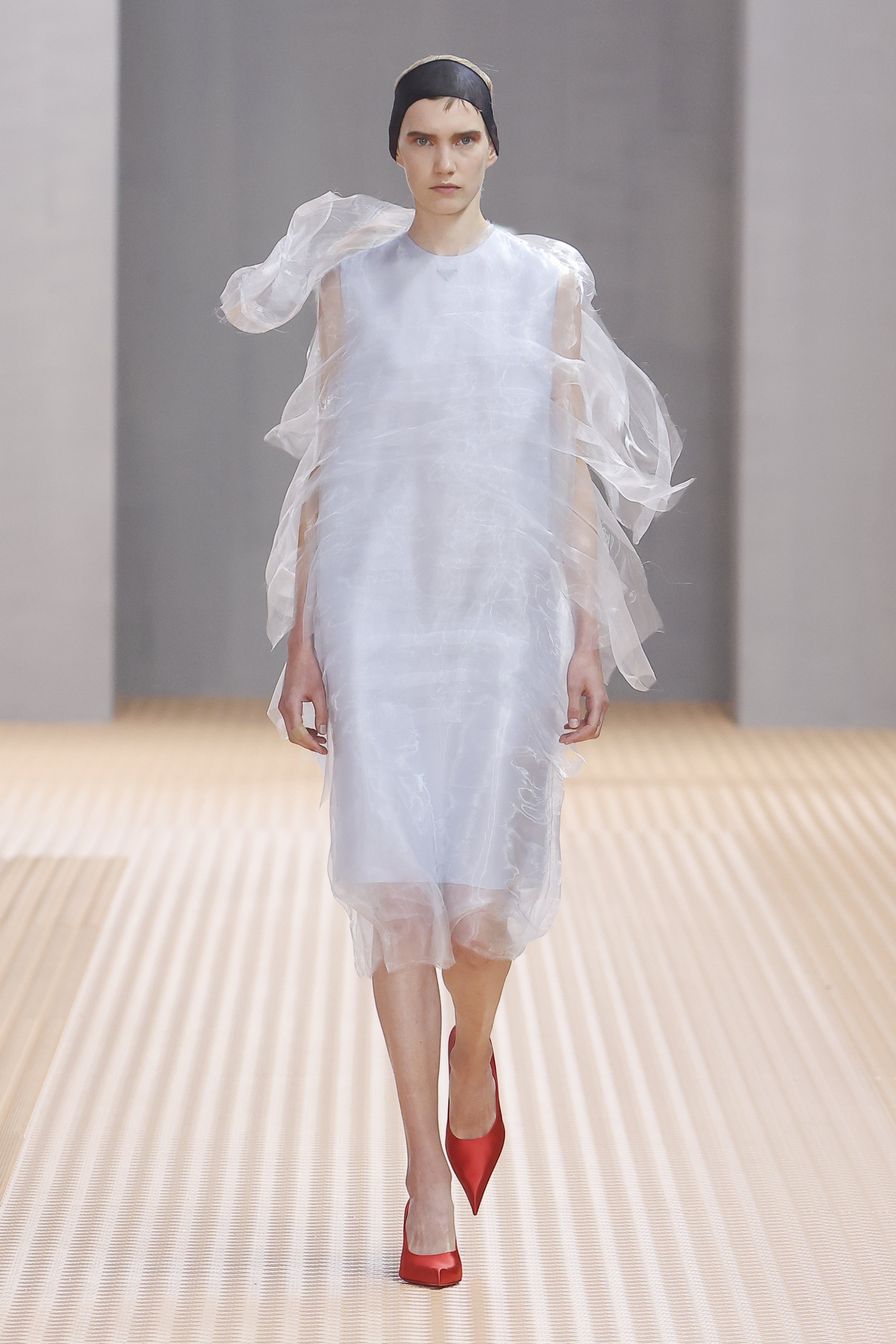At Prada SS24, Freedom Comes in the Form of a Suit
“An absolute freedom of the body” are the words Prada uses to describe its most recent Spring/Summer 2024 Womenswear show. It’s a rather romantic illustration–one that evokes imagery of flowing dresses as opposed to the blazer and straight-cut tunic we actually see on the runway.
But co-creative directors Miuccia Prada and Raf Simons’ take on freedom is an intellectual one, involving the reinterpretation of formal menswear shapes in fluid, lightweight fabrics. It comes as a result of a shared drive for experimentation–in Simons’ words, “the figuring out if it can be done.”
Instead of their usual rigid shape, suits appear in wool, with unfastened and oversized cuffs that hang like a boyfriend’s button up. Fragments of dresses made of georgette function as makeshift scarves and skirts, and behind the gazar ‘Haze’ dress trails a mist of silk organza. Even the venue–the highly geometric interior of the Desposito of the Fondazione Prada, broken by a translucent wall of slime oozing from the ceiling–mirrors the tension between structure and fluidity.
And whilst the collection comes with the Prada-Simons duo’s declared emphasis on craftsmanship over philosophising, they by no means neglect history. Out of the archives, they bring an original Mario Prada design; an evening bag that dates as far back as the brand’s inception in 1913.
The bag’s original iteration is one of Mario’s oggetti di lusso (objects of luxury); a good born from his deep interest in culture and process of travelling, curating and then collaborating with skilled artisans to create novelty articles.
On the present runway, the ruched, all-black, trapezoid pouch is made in the brand’s distinctive nappa leather and re-nylon, a deviation from the silk morie fabric originally proposed.
Its most peculiar feature, however, is its hand-carved clasp–a mythological figure (as the show notes mysteriously describe him) that would resemble some European statute, but for its exaggerated eyebrows, arresting expression and coloured tongue jutting out. A god of chaos or rage perhaps? Or potentially some sort of demon from Eastern lore.
These questions are never answered. The show notes tell us it’s a “reflection of contemporary enthusiasm for historical Eastern artistic esthetics and styles that exerted a great influence worldwide on decorative and fine arts”. Though it certainly harks to Mario’s curiosity and eye for relics, it feels unsatisfactory that a figure this striking would serve a solely decorative purpose.
But it seems that for now, Prada and Simons’ vagueness is deliberate, and maybe even deliberately playful. We can only satisfy ourselves with their insistence against proposing stories about the collection (despite the many they certainly hold).
Instead, Ms Prada tells us to focus on “the quality, method and techniques” of the clothes themselves. It’s a task that, seeing the dynamism of the garments and their gentle sway on the runway, really isn’t too hard to do at all.
Words by Sharyn Budiarto / More from Prada here
